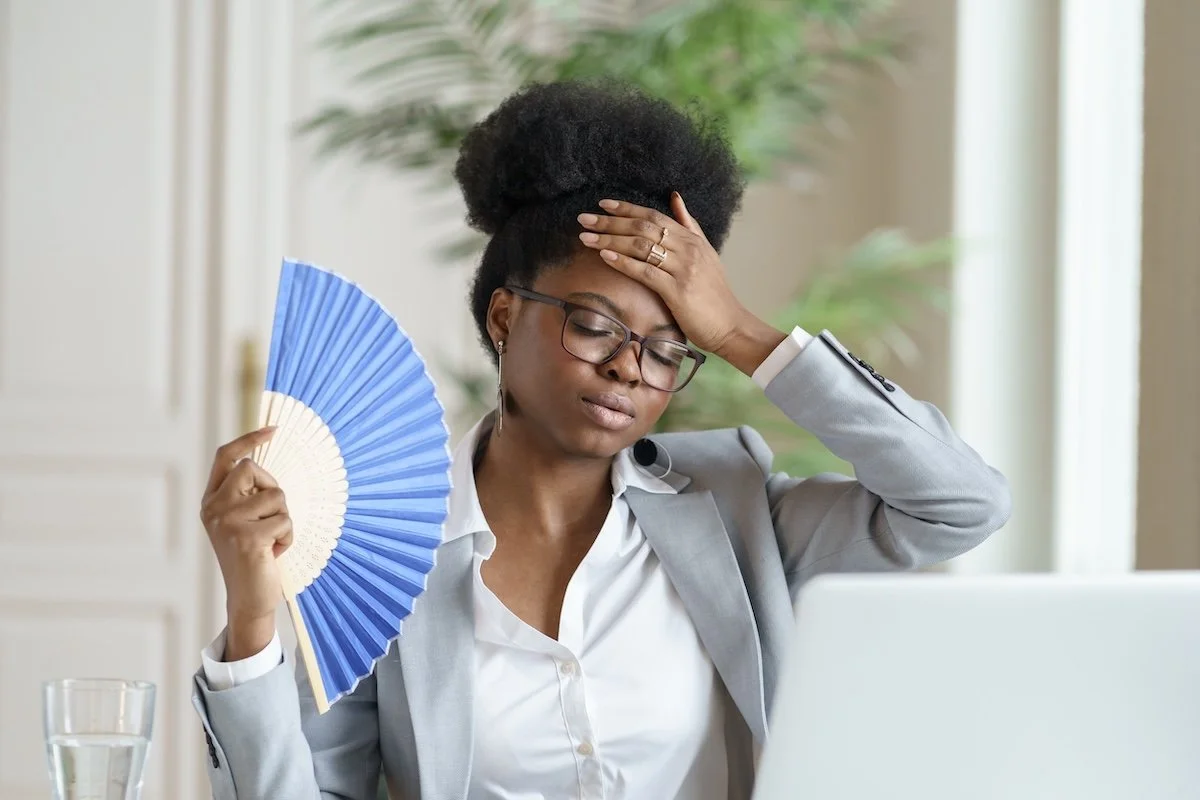Lake-Effect Migraine? How Humidity & Hormones Team Up in Northeast Ohio
June is Migraine Awareness Month, making it the perfect time to discuss a headache pattern that seems almost unique to the Great Lakes region. If you live in Westlake or any of the lake-shore suburbs, you know the routine: a front blows in from Lake Erie, the air turns heavy, and a throbbing ache blooms behind one eye before you can finish your coffee. For many women over forty, that weather-driven discomfort arrives on top of hormonal swings linked to perimenopause or post-menopause. When humidity and hormones collide, even a casual neighborhood walk can end with an ice pack in a dark room.
This article explains why damp summer air ramps up pain, how estrogen fluctuations lower your migraine threshold, and what you can do today to regain control. Whether you are seeking a migraine specialist Westlake families rely on or want to decode your patterns, the insights below will help you track triggers, balance hormones, and reclaim sunny days.
The Science Behind Humidity Headache Ohio Residents Feel
Northeast Ohio does not typically rank in the top ten for total rainfall, yet summertime humidity can rival that of a Gulf Coast afternoon. Lake Erie’s warm surface water evaporates rapidly between June and September, pumping moisture into already unstable air. When humidity climbs past sixty percent, two key changes occur inside your body:
Barometric Pressure Drop - Storm-ready air masses create lower atmospheric pressure. Blood vessels inside the skull respond by dilating, which can stretch pain-sensitive nerves lining the brain. For people with migraine-prone nervous systems, that vascular shift can flip a switch from calm to crisis within minutes.
Thermoregulatory Stress - Sweat evaporates more slowly in humid air, resulting in a rise in core body temperature. Heat stress triggers the hypothalamus (the brain’s thermostat), which is also involved in migraine pathways. The result is a double signal, leading to overheating and vascular dilation, which primes the brain for pain.
Those “humidity headache” spikes often follow a predictable timeline. The barometer falls, hair frizzes, and pressure builds behind the eyes. After the storm passes and humidity drops, vessels constrict, and some sufferers feel a second rebound attack. Tracking both phases is vital for effective treatment.
Hormone Fluctuations Lower the Threshold
Estrogen interacts with serotonin, a neurotransmitter that regulates blood vessels and pain perception. In the two days before menstruation, estrogen often falls thirty to fifty percent, setting off what clinicians call a “menstrual migraine.” During perimenopause, that roller-coaster ride intensifies as ovulation becomes irregular. The swings may widen from month to month, leaving little respite between drops.
Post-menopause brings its own twist. Estrogen stays consistently low, which can either relieve migraines or, for unlucky women, remove a stabilizing influence that once buffered weather-related triggers. If you suddenly notice more headaches after forty-five, hormone change is a prime suspect.
Mapping Your Unique Trigger Network
A paper calendar or a smartphone app can reveal patterns more quickly than relying on memory alone. Record these variables for at least six weeks:
Date and time of headache onset
Outdoor humidity and temperature
Barometric pressure (many weather apps list this)
Sleep hours and quality
Meals and caffeine intake
Physical activity or dehydration cues
Hormonal markers such as the first day of your cycle or hot-flash episodes
After a month, you may notice clusters, such as headaches two days before storms, on cycle day 26, or after consecutive nights of poor sleep. That data is gold for your physician because it separates coincidence from cause.
Strategies to Tame Lake-Effect Pain
Hydration with Electrolytes
Aim for half your body weight in ounces of water daily, more if you are outside longer than thirty minutes. Add electrolyte packets that include sodium and magnesium. Balanced minerals accelerate stomach emptying, allowing water to absorb faster.
Thermal Regulation
Carry a cooling towel or small spray bottle of water and peppermint essential oil. Apply to the back of the neck when humidity spikes. Lowering skin temperature by even one degree reduces hypothalamic stress.
Consistent Sleep-Wake Rhythm
Humid nights can wreck sleep. Use a dehumidifier set to below fifty percent in the bedroom and maintain a dark, cool environment. Even one hour of lost REM sleep raises migraine risk the next day.
Smart Sun Timing
Early morning and post-dinner walks avoid the peak humidity window, which usually falls between noon and 5 PM. If you need midday exercise, consider moving workouts indoors where climate control helps mitigate barometric swings.
Hormone-Balancing Options
Dr. Alexa Fiffick tailors treatments based on lab values and symptom diaries. Some women thrive on low-dose bioidentical estrogen patches paired with natural progesterone, while others prefer non-hormonal agents like magnesium glycinate, riboflavin, or prescription CGRP inhibitors. The key is personalization. Menopause migraine care is never one size fits all.
Acute Rescue Plan
Keep a small kit: prescriptions, a non-steroidal anti-inflammatory, anti-nausea dissolvable tablets, and a portable ice pack. Taking medication at the very first sign of aura or tension can limit an attack to thirty minutes instead of three hours.
Concierge Advantages for Chronic Headache
Traditional clinics often schedule fifteen-minute appointments weeks out, which barely covers symptom review, let alone deep dive trigger analysis. Concierge Medicine of Westlake offers same-day or next-day visits, thirty-minute minimum slots, and direct text access to Dr. Fiffick. That means:
Immediate medication adjustments when weather apps show low-pressure alerts
Rapid hormone panel results with on-site blood draws
Coordinated referrals for neuroimaging or physical therapy if neck tension complicates migraines
Quarterly strategy reviews to refine supplements, sleep hygiene, and fitness goals
Quick tweaks keep pain under control and prevent emergency room detours—a hallmark of concierge preventive care.
When to Seek Urgent Evaluation
Call 911 or head to the ER if you experience:
Sudden thunderclap headache reaching peak intensity in under a minute
New headache after age fifty with no migraine history
Headache plus facial drooping, slurred speech, or limb weakness
Headache with fever, stiff neck, or rash
These signs could indicate a stroke, meningitis, or other conditions needing immediate imaging.
Your Roadmap to Clear-Sky Days
Lake-effect humidity is an unchangeable fact of Ohio summers, but migraine intensity is not. By mapping triggers, mastering hydration, regulating hormones, and partnering with a physician who views you as a person rather than a chart entry, you can trade storm-driven dread for confident planning. Picture yourself scheduling that Edgewater Beach picnic without scanning the forecast first or finishing a sunset bike ride without counting down to the next pain pill.
Ready to transform humid afternoons into headache-free memories? Call 440-797-1871 or visit conciergemedicineofwestlake.com to book your comprehensive migraine evaluation. Together, we will develop a strategy that balances both the weather and your hormones, allowing you to savor every crisp Lake Erie breeze.





















